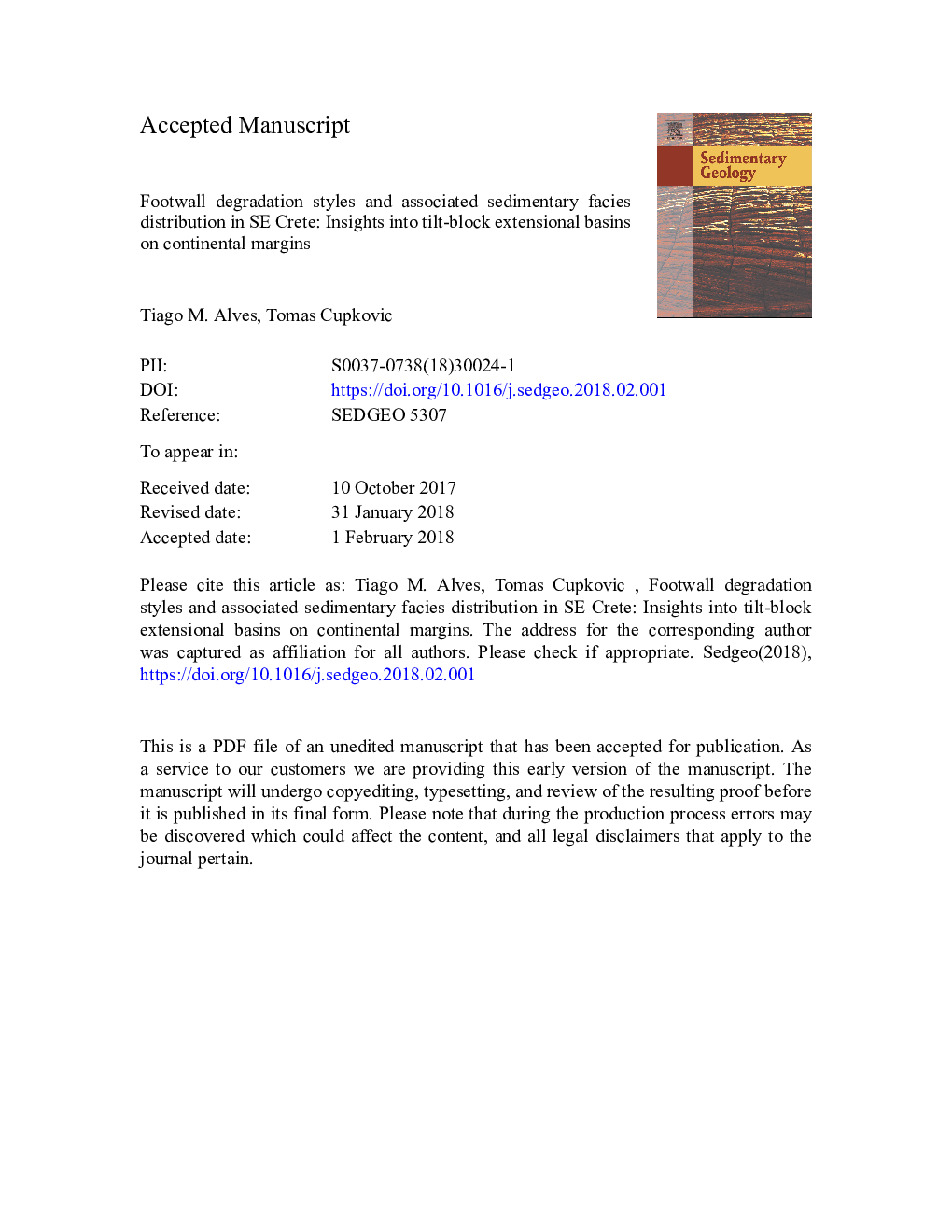| کد مقاله | کد نشریه | سال انتشار | مقاله انگلیسی | نسخه تمام متن |
|---|---|---|---|---|
| 8908519 | 1635996 | 2018 | 60 صفحه PDF | دانلود رایگان |
عنوان انگلیسی مقاله ISI
Footwall degradation styles and associated sedimentary facies distribution in SE Crete: Insights into tilt-block extensional basins on continental margins
ترجمه فارسی عنوان
سبک های تخریب پایپینگ و توزیع رخساره های رسوبی مرتبط در ساحل کرت: بینش به حوضچه های فرعی شیب دار در حاشیه های قاره
دانلود مقاله + سفارش ترجمه
دانلود مقاله ISI انگلیسی
رایگان برای ایرانیان
کلمات کلیدی
موضوعات مرتبط
مهندسی و علوم پایه
علوم زمین و سیارات
فرآیندهای سطح زمین
چکیده انگلیسی
Depositional facies resulting from footwall degradation in extensional basins of SE Crete are studied based on detailed geological maps, regional transects, lithological columns and outcrop photos. During an extensional episode affecting Crete in the late Miocene-early Pliocene, depocentres trending N20°E and N70°E were filled with fan deltas, submarine mass-wasting deposits, sandy turbidites and fine-grained hemipelagites sourced from both nearby and distal sediment sources. Deposition of proximal continental and shallow-marine units, and relatively deep (marine) turbidites and mass-transport deposits, occurred within a complex mosaic of tectonically controlled depocentres. The new geological maps and transects in this work reveal that depositional facies in SE Crete were controlled by: a) their relative proximity to active faults and uplifting footwall blocks, b) the relative position (depth and relative height above sea level) of hanging-wall basins, and c) the nature of the basement units eroded from adjacent footwall blocks. Distal sediment sources supplied background siliciclastic sediment ('hemipelagites'), which differ markedly from strata sourced from local footwalls. In parallel, mass-transport of sediment was ubiquitous on tectonically active slopes, and so was the presence of coarse-grained sediment with sizes varying from large blocksâ¯>â¯50â¯m-wide to heterolithic mass-transport deposits and silty-sandy turbidites. We expect similar tectono-sedimentary settings to have predominated in tectonically active Miocene basins of the eastern Mediterranean, in which hydrocarbon exploration is occurring at present, and on rifted continental margins across the world.
ناشر
Database: Elsevier - ScienceDirect (ساینس دایرکت)
Journal: Sedimentary Geology - Volume 367, May 2018, Pages 1-19
Journal: Sedimentary Geology - Volume 367, May 2018, Pages 1-19
نویسندگان
Tiago M. Alves, Tomas Cupkovic,
